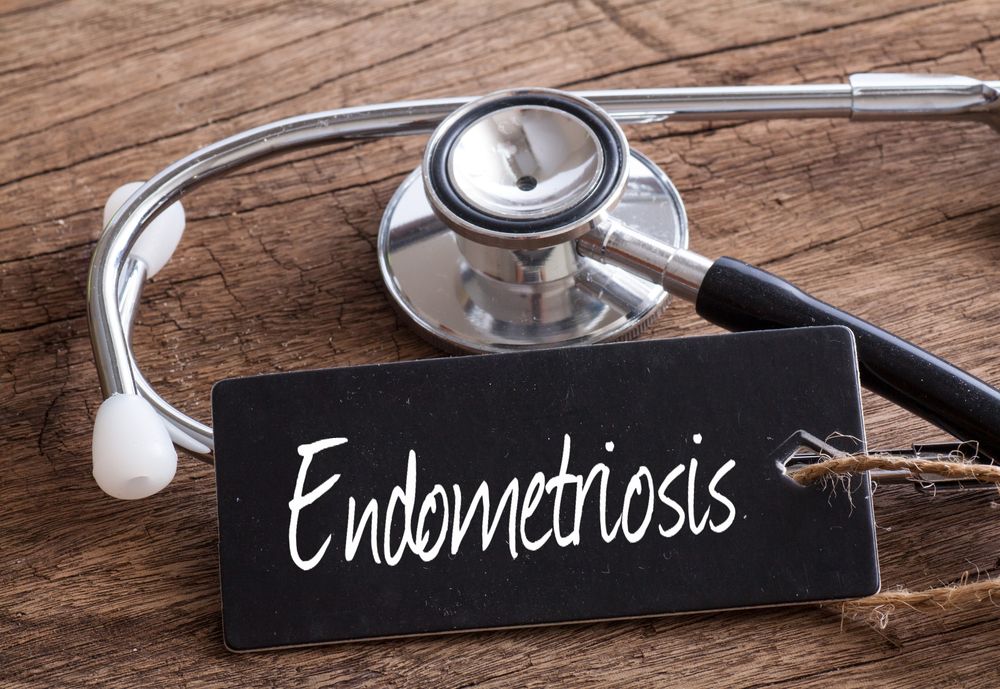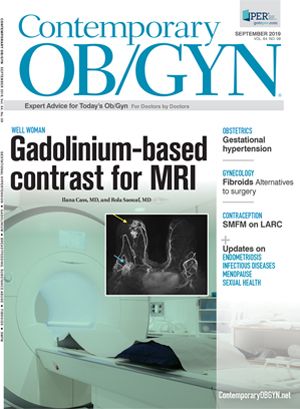Diagnosing rectosigmoid endometriosis
New research compared the effectiveness of MRI and TVS for detecting rectosigmoid endometriosis.
©Lemau Studio - stock.adobe.com

For noninvasive detection of rectosigmoid endometriosis, magnetic resonance imaging (MRI) and transvaginal ultrasonography (TVS) provide comparable high accuracy and positive post-test probabilities, according to a systematic review and meta-analysis in the journal PLOS One.
Although both modalities are employed for noninvasive diagnosis and preoperative mapping of rectosigmoid endometriosis, there remains no consensus as to which method is the most accurate.
The Brazilian review authors culled MEDLINE, Embase and Latin American and Caribbean Health Science Literature (LILACS) electronic databases to identify studies published in Portuguese, English, Spanish or French through February 2019. The eight studies analyzed comprised a total of 1,132 women who underwent both TVS and MRI for suspected endometriosis, based on clinical history (pelvic pain or infertility) and/or physical examination (pain and nodulation on palpation). The quality of the studies was considered good overall, with seven studies classified as being high-quality and one study of moderate quality.
Pooled sensitivity, specificity, positive likelihood ratios and negative likelihood ratios for MRI were 90% (95% CI: 87% to 92%), 96% (95% CI: 94% to 97%), 17.26 (95% CI: 3.57 to 83.50) and 0.15 (95% CI: 0.10 to 0.23), respectively. The values for TVS were 90% (95% CI: 87 to 92%), 96% (95% CI: 94% to 97%), 20.66 (95% CI: 8.71 to 49.00) and 0.12 (95% CI: 0.08 to 0.20), respectively. In addition, areas under the S-ROC curves (AUC) showed no statistically significant differences between MRI (AUC = 0.948) and TVS (AUC = 0.930) in diagnosis of rectosigmoid endometriosis (P = 0.13).
The average prevalence of rectosigmoid endometriosis among the studies was 47.3% (ranging from 16.4% to 76%), for which both methods demonstrated similarly high positive post-test probabilities: 94.8% for MRI and 93.9% for TVS. Combined use of MRI and TVS yielded an even higher post-test probability: 99.6%.
“Noninvasive diagnosis is important, as patients with this condition may go through numerous consultations and examinations, with the time from symptom onset to final diagnosis extending up to 7 years,” the authors wrote. However, the interval between TVS and MRI examinations was not reported in any of the eight studies and the interval between the TVS/MRI and reference standard examinations was not reported in three studies; thus these omissions may have caused some bias.
The authors noted that there is increasing interest in noninvasive diagnosis of deep endometriosis via laboratory tests (serological markers) or imaging examinations. Also, over the past decades, TVS and MRI have demonstrated more accuracy than other imaging methods like transrectal sonography, barium enema, and computed tomography colonography for detecting rectosigmoid endometriosis. TVS and MRI are also less invasive and do not require sedation.
“The study findings suggest that the combined use of TVS and MRI is reasonable, as the chance of noninvasively and accurately diagnosing rectosigmoid endometriosis rises to practically 100% when both examinations yield positive results,” the authors wrote.
Despite the review’s encouraging findings, there was a lack of bowel preparation, which increases the accuracy of intestinal lesion detection. None of the included studies had this procedure for both TVS and MRI, albeit some studies scheduled it for one of the two modalities. “Both examinations can be performed on the same day, requiring a single bowel preparation, which we believe is important to increase the detection rate of small lesions,” the authors wrote.
A second limitation of the analysis is that only the rectosigmoid colon was investigated in all the studies, therefore preventing the scope of the meta-analysis from encompassing other intestinal locations beyond the rectosigmoid. No study compared lesion characteristics either, which greatly influences surgical planning.

Addressing mental health risks in endometriosis patients
December 10th 2024A new study underscores the critical need for gynecologists and mental health professionals to collaborate in managing anxiety, depression, and sexual dysfunction in women with endometriosis, driven by chronic pain and related comorbidities.
Read More
Study finds high rates of incidental MRI findings in endometriosis cases
October 29th 2024A recent study highlights the frequent occurrence of incidental findings on pelvic magnetic resonance imaging for endometriosis, emphasizing the need for radiologists to focus on those with higher clinical significance.
Read More
